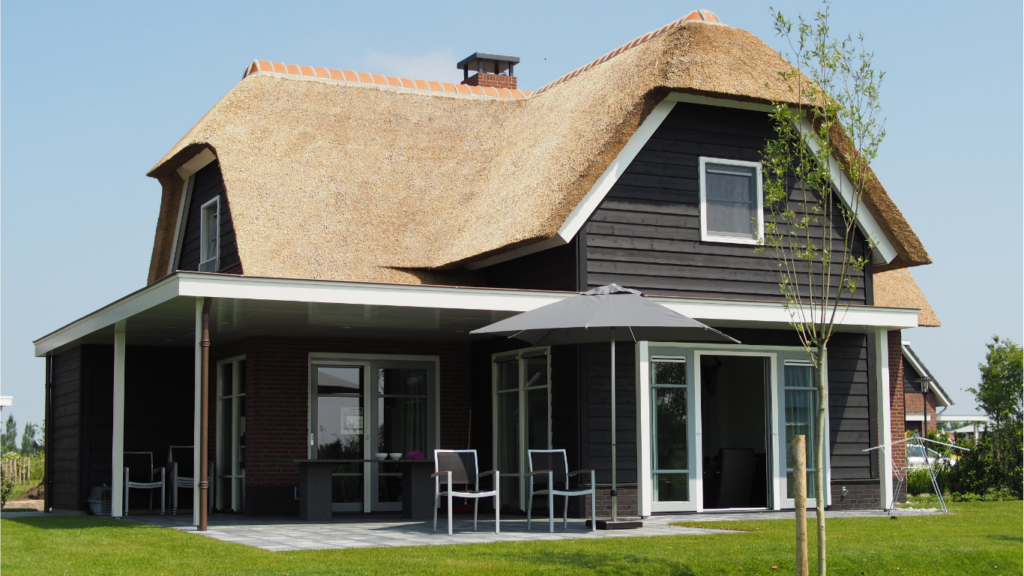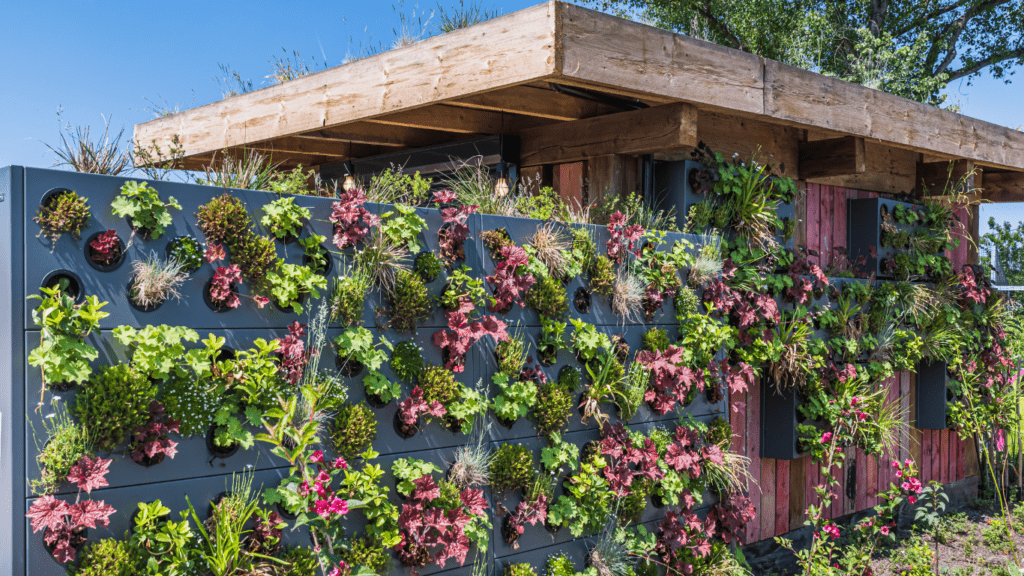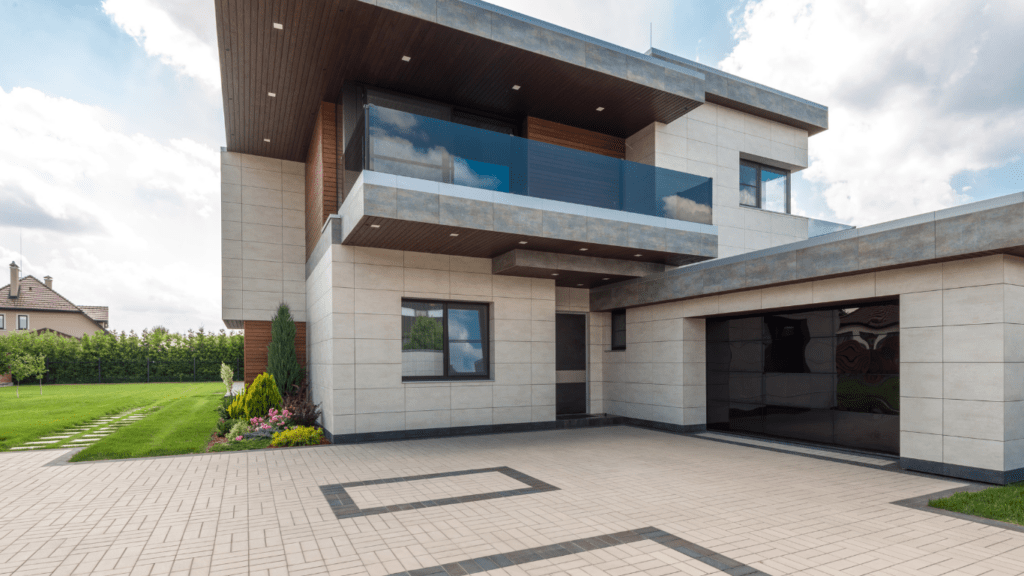Bold and Beautiful: An Overview
Dark exteriors have rapidly become a favorite in home design. These bold colors, such as deep charcoal, rich navy, and even black, drastically enhance curb appeal. The contrast dark shades offer against vibrant landscapes makes homes stand out, creating a dramatic yet sophisticated look. This trend signifies more than just a passing whim. It’s a definitive shift toward bold statements in architecture.
Homeowners appreciate the aesthetic benefits. Dark exteriors provide a striking canvas for other design elements. White trim looks crisp, wooden accents feel warm, and metal fixtures shine brightly against darker backdrops. The versatility of dark exteriors enables a variety of styles, from modern to classic.
Designers also favor dark palettes. These shades offer a sense of permanence and robustness. They work well in different climates. In snowy regions, dark hues create a stark yet elegant contrast. In sunny areas, they absorb light, reducing glare.
Maintenance of dark exteriors has also improved. Advances in paint technology ensure these bold colors resist fading and weathering. This means that while embracing a trend, homeowners don’t sacrifice durability. The materials used, paired with superior finishes, enhance longevity.
Communities are increasingly accepting dark exteriors. Homeowners’ associations (HOAs) are recognizing the demand for variety and allowing these designs. This trend is reshaping neighborhood aesthetics, fostering a new kind of visual harmony.
Dark exteriors are redefining home design. They’re bold, beautiful, and increasingly popular among both homeowners and designers. This trend’s rise is a reflection of a broader shift towards embracing daring, sophisticated designs that stand the test of time.
Historical Context of Dark Exteriors
Dark exteriors have a long history, dating back centuries. Understanding their historical use helps appreciate their current resurgence in home design.
Early Uses of Dark Colors
Dark exteriors first appeared in Gothic architecture during the 12th century. Cathedrals and castles used dark stone to convey strength and permanence. For example, Notre-Dame de Paris features dark, medieval stone. In the 19th century, dark colors became popular in Victorian homes. These structures, often adorned with dark brick or wood, aimed to display wealth and sophistication.
Evolution Through the Decades
By the mid-20th century, dark exteriors phased out as lighter tones dominated suburban developments. Homes in the 1950s and 1960s favored beige, white, and pastel colors. This trend lasted until the late 20th century when modernist and minimalist design brought dark hues back into popularity. Architects like Le Corbusier and Ludwig Mies van der Rohe utilized dark materials in their innovative designs. This period set the stage for today’s trend, where bold dark exteriors are embraced for their dramatic impact and timeless appeal.
Advantages of Dark Exterior Home Design

Dark exterior home design offers several advantages that make it an appealing choice for homeowners and designers. From enhancing aesthetics to improving energy efficiency, dark shades bring numerous benefits.
Aesthetic Appeal
Dark exterior colors instantly elevate a home’s aesthetic appeal. Deep hues like:
- charcoal
- navy
- black
provide a striking contrast against natural surroundings. These shades create a dramatic backdrop, highlighting architectural details and landscaping. For example, white trim and wooden accents stand out more vividly against a dark facade, adding sophistication and character.
Energy Efficiency
Dark exteriors can contribute to better energy efficiency. Dark colors absorb more heat from the sun, which can be beneficial in cooler climates. This absorption helps maintain warmer indoor temperatures during colder months, potentially reducing heating costs. However, efficient insulation and proper ventilation are essential to avoid overheating in warmer climates.
Durability and Maintenance
Advancements in paint technology enhance the durability of dark exterior colors. Modern paints are designed to resist fading and peeling, ensuring that the rich hues remain vibrant over time. These paints often include UV protection, extending the lifespan of the exterior finish. Regular maintenance involves routine inspections and occasional touch-ups, but the long-lasting quality of today’s paints minimizes these efforts.
Popular Dark Shades and Materials
Dark exteriors are becoming popular, featuring rich and dramatic hues. Let’s explore top dark paint colors and ideal materials for these striking designs.
- Trending Dark Paint Colors
Trending dark paint colors feature diverse deep shades. Deep charcoal colors like Sherwin-Williams’ “Iron Ore” offer a sophisticated neutral with subtle undertones. Rich navy shades such as Benjamin Moore’s “Hale Navy” provide classic elegance. Jet black tones like Behr’s “Black” make bold statements. Each hue transforms homes into eye-catching structures. Designers often pair these colors with accents, creating contrast and balance.
- Material Choices for Dark Exteriors
Material choices for dark exteriors enhance design depth. Architects favor wood siding treated with stains in shades like ebony and walnut for a natural, warm aesthetic. Metal panels in matte black or dark bronze offer modern, sleek appearances. Composite materials such as fiber cement, available in dark finishes, provide durability and lower maintenance. Brick and stone in darker hues add a timeless and permanent feel. Combining these materials yields unique, visually appealing homes with lasting allure.
Case Studies of Dark Exterior Homes
Dark exterior homes are making a bold statement in neighborhoods worldwide. With their striking aesthetics and sophisticated appeal, these homes showcase the versatility of dark tones in modern design. Here, I’ll explore two notable case studies.
Iconic Examples
- The Blackwood House, Melbourne
The Blackwood House in Melbourne exemplifies a perfect fusion of nature and architecture. This residence features a deep charcoal exterior, seamlessly blending with its lush surroundings. The use of dark timber cladding elevates the design, creating a modern yet timeless appeal. The house’s dark exterior not only enhances its aesthetic appeal but also provides a stark contrast to the greenery, highlighting the natural landscape.
- The Black Barn, New York
The Black Barn in New York’s Hudson Valley showcases a bold use of blackened wood cladding. This design choice enhances the rustic charm of the barn while providing a sleek, contemporary look. The dark exterior, complemented by large windows, offers a dramatic effect that stands out against the pastoral setting. The barn’s design aligns with sustainable building practices, incorporating reclaimed materials and energy-efficient solutions.
Modern Innovations
- Dark Metal Panels
Metal panels in dark shades are revolutionizing home exteriors. One example is a California home clad in matte black metal panels, creating a sleek and modern appearance. These panels offer durability and minimal maintenance, resisting weather-related wear and tear. The home’s dark metal exterior pairs well with natural elements, featuring wooden accents and extensive landscaping.
- Composite Siding
Composite siding in deep tones is gaining traction for its sustainability and visual impact. A recent build in Seattle features dark composite siding that mimics the appearance of natural wood. This siding not only provides a sophisticated look but also enhances the home’s energy efficiency by offering superior insulation. Attention to sustainable design sets this home apart, using environmentally friendly materials while maintaining a striking, bold exterior.
These case studies showcase how dark exterior homes are redefining architectural aesthetics and embracing the elegance and durability of deep hues. From historical inspirations to modern innovations, dark exteriors continue to captivate designers and homeowners alike.
Tips for Designing with Dark Exteriors
Designing with dark exteriors involves careful planning. Here are practical tips for achieving a visually striking and balanced home design.
Balancing Light and Dark Elements
Balance between light and dark elements creates visual harmony. For example, pairing dark exterior walls with light trim, window frames, or doors adds contrast. Incorporate reflective surfaces, such as glass, to bounce light and create contrast. For contemporary homes, integrating metal accents further enhances the dynamic look. Additionally, ensure ample outdoor lighting to illuminate dark surfaces, making the space inviting in the evening.
Choosing Complementary Landscaping
Strategically selecting landscaping enhances dark exteriors. Opt for plants with varying textures and colors to soften the boldness of dark walls. Lush greenery, like ferns and hostas, complements dark exteriors. Bright flowers, such as hydrangeas and peonies, add visual interest. Use pathways and outdoor furniture in lighter tones to break up the dark façade. Furthermore, consider integrating water features that reflect light, adding a lively dynamic to the surroundings.



 Betsylie Sheetsin – Home Renovation Expert
Betsylie Sheetsin serves as the Home Renovation Expert at Castle Shelf House, specializing in giving practical advice for both small and large-scale home improvements. With years of experience in construction and renovation, Betsylie understands the importance of blending durability with design. Her insights into home renovation projects, along with expert advice on the latest materials and techniques, empower homeowners to tackle even the most ambitious projects confidently.
Betsylie Sheetsin – Home Renovation Expert
Betsylie Sheetsin serves as the Home Renovation Expert at Castle Shelf House, specializing in giving practical advice for both small and large-scale home improvements. With years of experience in construction and renovation, Betsylie understands the importance of blending durability with design. Her insights into home renovation projects, along with expert advice on the latest materials and techniques, empower homeowners to tackle even the most ambitious projects confidently.
